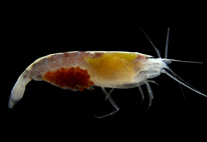Abstract
Scanning Electron Microscopy was used to describe the eggs of Georgecraigius fluviatilis (Lutz). Length is 722.8±39.6 µm and width is 177.1±9.8 µm. Diameter of the micropylar disk, surrounded by an irregular flattened collar, is 28 µm. The outer chorionic sculpture consists of cells of irregular shapes, containing tubercles with pitted surface. In the ventral region, tubercles of several diameters are irregularly distributed in chorionic cells, while in the dorsal region one larger tubercle is surrounded by several smaller ones. The eggs appear to lack structures for adhesion, certainly unnecessary due to the habit of laying eggs separately on water surfaces.

